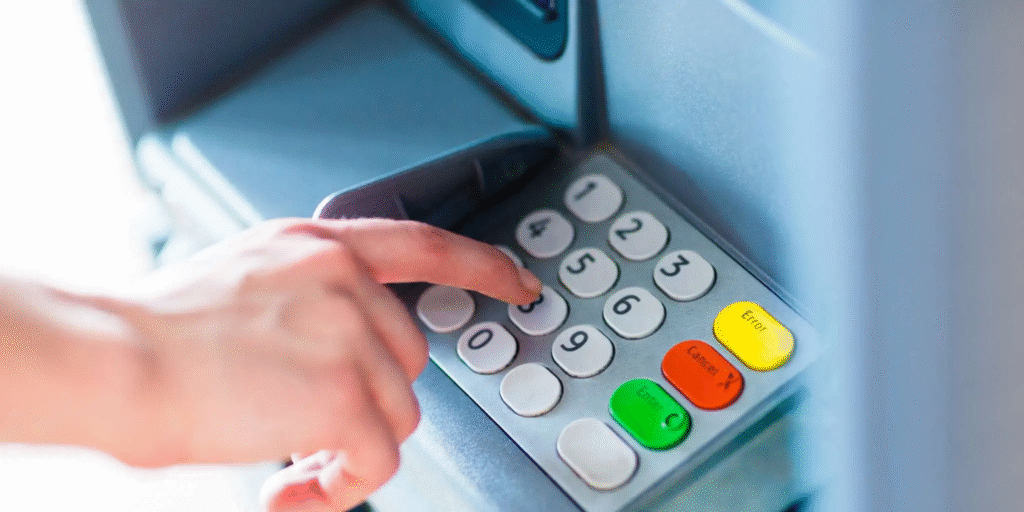
Chase Bank ATM Glitch
In recent years, the financial industry has faced a growing number of technical issues and system glitches, ranging from mobile banking outages to ATM malfunctions. One high-profile incident that captured the attention of consumers and industry experts alike was the Chase Bank ATM glitch. While glitches are not uncommon in our increasingly digital world, this particular event sparked concern due to its wide-reaching impact on Chase customers and broader implications for financial security and system reliability.
This 3,000-word deep dive explores the Chase ATM glitch in detail—what happened, the timeline, customer experiences, the response from Chase, the root causes, and most importantly, how you can safeguard your finances in an era of technical uncertainty.
1. What Was the Chase ATM Glitch?
The Chase ATM glitch refers to a system-wide error in which ATMs either dispensed incorrect amounts of cash, failed to complete transactions, double-charged customers, or became temporarily inoperable. Though not the first incident of its kind, this glitch stood out because of the scale and the significant financial confusion it caused for customers across the United States.
Common Customer Reports:
- Double withdrawals
- Account debits without dispensing cash
- Incorrect balance displays
- Unavailable ATM networks for hours or days
2. Timeline of Events
Phase 1: Initial Complaints
Customers began reporting unusual ATM behavior on social media and Chase’s support forums. Most issues seemed to start around a specific weekend or late at night during routine system updates.
Phase 2: Media Attention
As the number of complaints grew, news outlets began covering the story. Chase acknowledged the problem and assured customers that a fix was underway.
Phase 3: System Patches
Chase issued multiple software patches and server-side updates. Some ATMs were taken offline temporarily.
Phase 4: Resolutions and Refunds
Most customers received automatic refunds for any overcharges or missing withdrawals within 2–3 business days.
3. How Did the Glitch Happen?
While Chase did not publicly release a detailed technical report, financial experts and cybersecurity analysts speculate that the glitch stemmed from a software update gone wrong, possibly involving the interface between backend transaction servers and physical ATM terminals.
Possible Causes:
- Corrupt software patches
- Server overload during high-traffic periods
- Failure in syncing real-time data between ATMs and account databases
- Security firewall disruptions
In complex banking ecosystems, even a small code error can cascade into massive system-wide failures.
4. Impact on Chase Customers

Financial Stress
Many users were left without access to their funds, especially those who relied on daily cash withdrawals. For paycheck-to-paycheck customers, this was especially disruptive.
Emotional Toll
Some customers described feelings of anxiety, panic, and frustration when they couldn’t access their money or saw incorrect balances.
Business Interruption
Small business owners who use Chase for daily cash needs (e.g., paying staff or purchasing supplies) faced delays and reputational harm.
5. Chase’s Response to the Glitch
Chase responded by:
- Issuing a public apology via email and on their official website
- Proactively refunding affected customers
- Offering temporary fee waivers for overdraft charges caused by the glitch
- Setting up a dedicated customer support hotline
While many applauded Chase for acknowledging the issue quickly, others criticized the bank for not providing clearer updates during the disruption.
6. Customer Support: Was It Enough?
Chase’s support centers were reportedly overwhelmed with calls during the glitch. Hold times stretched to 1–2 hours for some customers.
Key Issues:
- Difficulty getting real-time updates
- Lack of transparency around the cause
- Mixed information from different support agents
Some customers felt left in the dark, which led to a temporary erosion of trust.
7. Regulatory Oversight and Industry Standards
The glitch prompted investigations by regulatory bodies such as:
- The Consumer Financial Protection Bureau (CFPB)
- Office of the Comptroller of the Currency (OCC)
While no major fines were levied, regulators encouraged Chase and other banks to invest in more robust systems testing.
Industry Takeaway:
Banks must implement better contingency plans for technical failures and improve communication strategies with users.
8. Lessons Learned for Consumers
If a major glitch can affect one of the largest U.S. banks, it can happen anywhere. Here are actionable tips for consumers:
a. Always Keep Multiple Payment Options
- Carry a secondary debit/credit card
- Keep a small amount of emergency cash
- Use mobile wallets as backup
b. Set Alerts and Monitor Accounts
- Enable transaction alerts via SMS or app
- Review bank statements regularly
c. Know Your Bank’s Customer Support Channels
- Save key support numbers in your phone
- Know how to escalate issues quickly
d. Document All Issues
- Take screenshots of errors or account activity
- Keep receipts from failed transactions
- Note dates, times, and locations of any glitches
9. The Role of Technology in Modern Banking

While technology enables fast and convenient banking, it also introduces new vulnerabilities. The Chase ATM glitch is a case study in the trade-offs between convenience and reliability.
Pros:
- 24/7 access to funds
- Mobile banking integration
- AI-driven fraud detection
Cons:
- Increased dependency on software
- Higher risks during updates
- Potential for widespread outages
10. What Banks Can Do Better
This incident serves as a reminder for banks to enhance their operational resilience.
Suggestions:
- More rigorous software testing before rollout
- AI simulation for stress testing ATM networks
- Improved real-time customer communication
- Redundant systems to maintain uptime during outages
11. Future Outlook: Are Glitches the New Normal?
As banking becomes more digitized, occasional system failures may become a reality. However, how banks respond to these glitches will be the true measure of their reliability.
Trends to Watch:
- Cloud-based ATM systems
- Decentralized finance (DeFi) alternatives
- Blockchain integration for transaction logging
Conclusion
The Chase Bank ATM glitch was a wake-up call for both financial institutions and consumers. While the issue was eventually resolved, it exposed critical vulnerabilities in the systems we trust to manage our money.
For consumers, this event underscores the importance of financial preparedness and staying informed. For banks, it’s a call to invest in robust, scalable technology and transparent communication protocols.
In an age where software runs the financial world, resilience isn’t optional—it’s essential.




